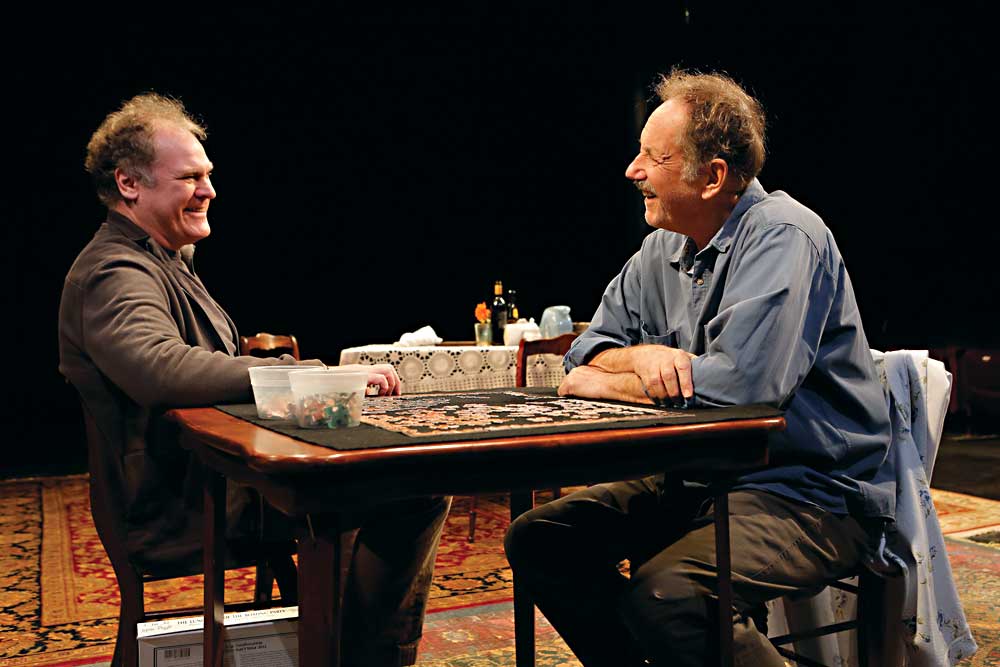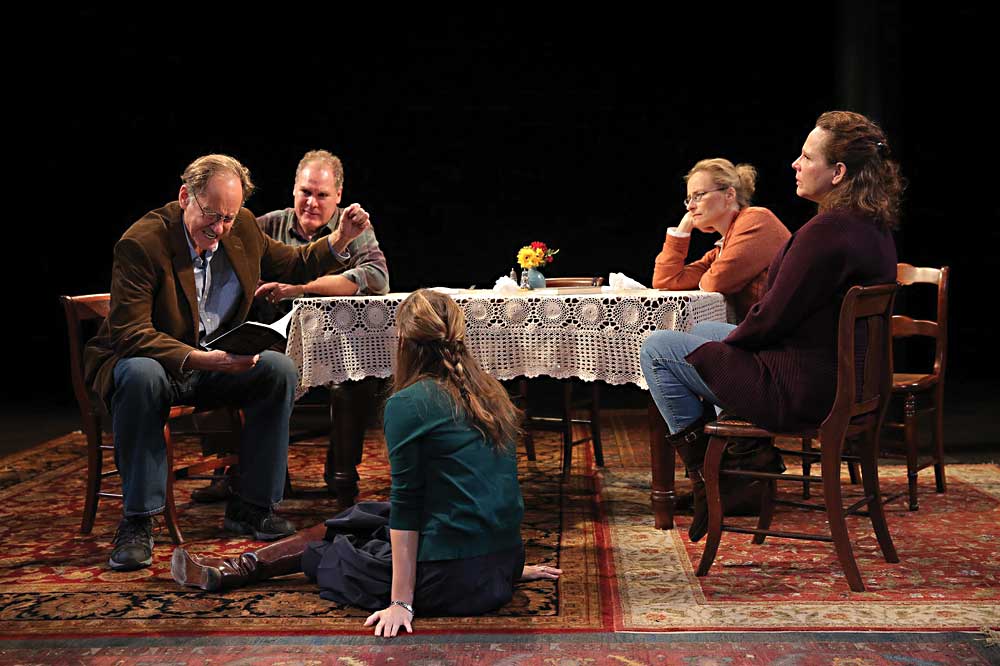 Last year I saw a show at the Brooklyn Museum by the African artist El Anatsui. Anatsui, for those of you who don’t know, creates huge, mural-like sculptures, which hang or appear to drape down a wall. They are massive, sometimes a few stories tall, and they have been hung outside on buildings as well as inside galleries and museums. One of the extraordinary features of these very beautiful objects is what they are made from: small bottle caps from very specific liquor bottles, those imported for years from Europe to Africa. Hence, there is a sense of history or ghosts wrapped up in these objects.
Last year I saw a show at the Brooklyn Museum by the African artist El Anatsui. Anatsui, for those of you who don’t know, creates huge, mural-like sculptures, which hang or appear to drape down a wall. They are massive, sometimes a few stories tall, and they have been hung outside on buildings as well as inside galleries and museums. One of the extraordinary features of these very beautiful objects is what they are made from: small bottle caps from very specific liquor bottles, those imported for years from Europe to Africa. Hence, there is a sense of history or ghosts wrapped up in these objects.
Yet as seen for themselves, they are simply unbelievably beautiful; and though made of thousands of tiny metal caps, they look like folds of rich cloth. In the exhibit there was an interesting and cheeky article on one of its walls. It showed a photo of one of these sculptures, owned by the Bill and Melinda Gates Foundation. And it quoted how this work is described on a small plaque in this foundation’s headquarters where the sculpture now hangs. The plaque reads: “Village children helped hammer the bottle caps, and the artist repaid their labor by sending them to school.”
So the artist was “giving something back.” That seems to be the point the people at the Gates Foundation, who chose to display Anatsui’s sculpture in this way, wish to make—to celebrate the heartwarming story of an artist using his art to put underprivileged kids through school, and how much this adds to the very power and beauty of the art itself. Or so the foundation seems to wish us to believe.
Fascinating. Unfortunately, it’s not true. Anatsui, you see, didn’t do this; he doesn’t do this. He pays people, sometime very young people, to hammer the caps—pays a fair going wage in Nigeria, where he lives and works, for this kind of piece work. And it ends there. He doesn’t send kids to school. He doesn’t take on such responsibilities. He—makes art. He’s—an artist.
I recently wrote a play where the choreographer George Balanchine is a character. He was asked once why he did what he did. He said, “You can ask a horse why he’s a horse, but he just lives a horse’s life.” To quote Mr. Balanchine again with his passion: “I am not trying to prove anything,” adding, “That is, [not] trying to prove something quite other than the fact of dancing.”
The fact of dancing. The fact of art. The fact of theatre. Clearly Mr. Balanchine didn’t see his art as a means to some end, or as some way to give back. Rather the art is an end in itself, and, one can imagine, he would think a very important, valuable, essential, even soul-defining end.
I am guessing that Mr. Anatsui would feel the same way. But, you see, for some—like whoever put up that sign at the headquarters of the Gates Foundation—art just isn’t enough. It also needs another purpose. Why? To justify itself? So it needs to be an engine for education or health care or—whatever. Anything besides “just” great art. Why is this? And what does it say or tell us about ourselves? Our culture? Our country? How we see art? How we see artists?
I remember once gratefully receiving a fellowship from a foundation for my playwriting. It was at a time in my career when it was very needed and appreciated. Then I was told there was even more money available to me should I and a theatre find a project where together we could—and I remember the words very clearly—“give something back to the community.”
I couldn’t understand this then, and I can’t understand it now. How that was connected to a prize for writing plays?
Years ago I worked for the Brooklyn Academy of Music, when the area around BAM was very poor and dangerous. The walk between BAM and the Atlantic Avenue subway stop was a short stroll you didn’t want to make alone. And not just at night. BAM, God bless it, argued for funding from the city—as an urban development project. A way to liven up the sidewalks, in essence to gentrify the neighborhood. And it was this argument more than any other that convinced the city and borough to keep BAM afloat during its darkest and sketchiest days. That was useful. That was clever. But such arguments can—in their success—create confusion in the minds of a society about the purpose and value of art.
Such needs to justify art (and especially theatre) can be taken up and run with by artistic directors, managers, development directors—all trying to explain to those not in the theatre why theatre matters. But—and this is a position I have taken some time to arrive at—sometimes such efforts by those trying only to help, trying only to gain support for my art, to get money to pay me, do so by distorting the purpose and place of the art itself—and therefore justifying the art with reasons that do not justify. This only confuses and makes an artist’s place in society tenuous or distant, to the point where it, of course, sounds only fair to the rest of the community, to ask each and every artist “to give something back.”
This is not easy for me to say, not an easy conclusion to come to, as most often the folks behind these efforts are trying their best to help and support art. But the wrong help can be worse than no help. Or, to put it another way, the first rule of the helper is “do no harm.” But harm is being done, again and again and again.
Look at our National Endowment for the Arts, which today has become a heartbreaking example of such thinking gone wrong. Not for decades have monies been given directly to artists—to create art. Funds must first be channeled through organizations, through managements, each topping the other to articulate in their NEA applications how such funding is needed—how many schoolchildren are being served, how their neighborhoods are being advanced. This is where the “bottom line” thinking is: what the art can give back, what art can facilitate, in terms of more hotel guests, more meals served in restaurants, less crime, higher property values and hence more property-tax earnings, and so on and so forth. Inch by inch, art—and in particular theatre—has come to be seen as but an engine for economic redevelopment. Much the same way that young visual artists have been used again and again—young artists seeking cheap space no matter the inconvenience or danger to themselves, only to find themselves clearing the way for gentrification and the profit of others. Much like that.
And so—in the eyes of this artist, at least—something like the NEA becomes not a help but a hindrance to the ongoing conversation we need to have on the value and purpose of art, of theatre, in a society, in our society, today. About its necessity.

Now I have started to worry about how this is beginning to sound—like that old argument of aesthetes—“art for art’s sake.” Art as somehow removed from the world. From life. Some sort of precious object to be admired. Praised. Revered. Set on the shelf. But that is not at all what I am trying to describe. In fact, I will try my best to describe just the opposite—art not removed from life, but an art—theatre—that is a fundamental, essential part of life and society as we know it.
There are obvious examples of the value and place of theatre in society, and less obvious ones. Let’s start with the obvious.
The wonderful director Peter Brook writes in his book The Open Door: “In the days of totalitarian oppression, a theatre was one of the rare places where for a short period one could feel free…Hidden and protected by the anonymity of an audience, one could join by laughter and applause in acts of defiance of the authority.”
What can happen in a theatre, in the dark, among strangers can be very dangerous for those who wish to control us.
A great mentor of mine, the Romanian director Liviu Ciulei, used to tell me a story about a night of theatre in Bucharest years ago. It was a production that had been playing for months, where during the pre-show there was a long laundry list of sayings repeated over and over through speakers. Innocuous sayings, the equivalent of our “be healthy, wealthy and wise.” Sayings we wouldn’t even take notice of. Then, one day, the Communist regime arrested the director of another theatre. And that evening, when the laundry list came to this slogan—“Come to the theatre, you’ll have a good time”—the audience erupted and wouldn’t stop applauding for 20 minutes. A theatre by definition is full of strangers.
So here is something I know, or that I think I know: Theatre at its essence is not a building, not a style, not a political platform or a megaphone for change, nor is it an entertainment or a way to forget your troubles for a while or any of that; theatre at its essence is simply a kind of relationship. An intimate human relationship. Between the actor, representing the playwright, and you, the audience.
And it is a potentially profoundly deep relationship, one by which we can know ourselves or, to quote another playwright, where we may gain “the knowledge of our souls.”
What does that mean, “the knowledge of our souls”?
The same playwright wrote, “What livelier microcosm of human society can there be than an acted play?” What does he mean by that? He goes on to say, “Dramatic art is the working out, in terms of make-believe, not of self-realization of the individual, but of society itself.”
I think he is saying that a play, potentially, allows us to see ourselves, not just as individuals, but as we are as a society, as a culture—to see who we are, how we became what we are, how we have what we have and lost what we’ve lost.
The playwright I’ve just quoted is named Harley Granville Barker. He was also an actor, a director, producer and theatre visionary in the first half of the 20th century. And he also wrote this, about acting: “One is tempted to imagine a play—to be written in desperate defiance of Aristotle—from which doing would be eliminated altogether, in which nothing but being would be left. The task set for the actors would be to interest their audience in what the characters were, quite apart from anything they might do; to set up, that is to say, the relation by which all important human intimacies exist.”
The relation by which all important human intimacies exist. Is that what is going on in a play? Is that part of its potential? What we are attempting to tap? One element of its peculiar nature? The relation by which all important human intimacies exist.
I watched a documentary recently of Ingmar Bergman directing a movie. In one scene he counsels a little actress. She asks, “I’m to be sad, right?” And Bergman says, “Yes, just don’t show that. Just think it.”
Just be. Don’t show, just be.
Which, of course, is not unlike everyday human relationships. When we feel someone is trying to impress us, or sell us something, or get us to do something—we naturally resist; pull back. But if what or who we see and feel in front of us is someone being themselves, being open and honest and vulnerable? We lean forward—and participate. And there’s a good start to encouraging what we hope will be an honest and real relationship.


